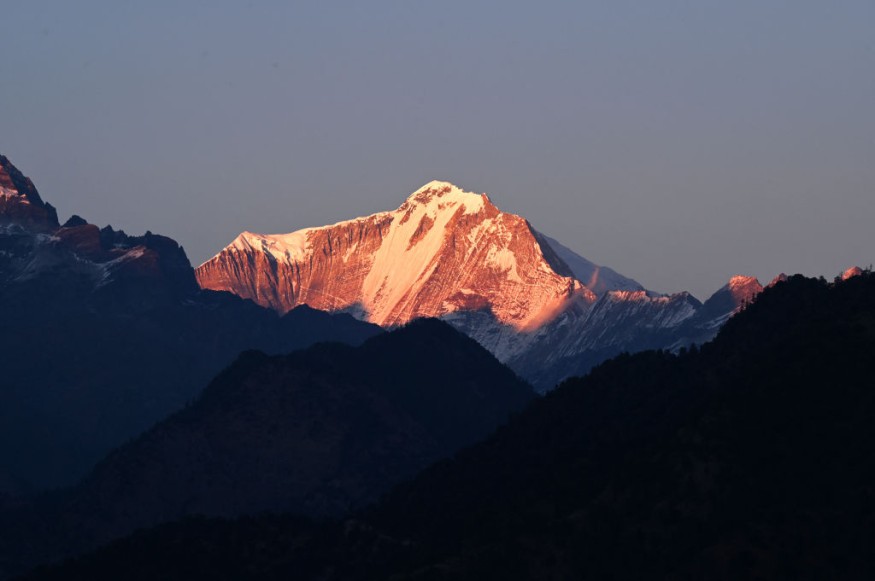
Experts found out that the Himalayas could be growing due to the collision of Indian and Eurasian plates.
They said that the first-order configuration of the Himalayan orogen is defined by the northward motion of the Indian Plate, whether directly "underplating" under the Tibetan crust or "subducting" beneath a mantle wedge.
The scientists' 3D S-wave receiver-functions newly revealed orogen-perpendicular tearing or warping of the Indian Plate. It showed that west of 90°E, the southern limit of the Tibetan lithosphere-asthenosphere boundary, is at the Indian crustal front, 100 kilometers north of the Yarlung-Zangbo suture.
This development had implied an underplating of the intact Indian lithosphere beneath Tibet.
Oceanic, Continental Plates Collide
Scientists explained that in cases where oceanic and continental plates collide, the denser oceanic plate slides beneath the lighter continental plate in a process called subduction.
When two similarly dense continental plates collide, however - as is the case below the Himalayas - it is not so simple to predict which plate will end up under the other.
Experts defined subduction zone as the spot where two of the planet's tectonic plates collide and one dives, or subducts, beneath the other. This tectonic process can produce some of the planet's most powerful earthquakes, tsunamis and volcanoes.
In relation to this phenomenon, geoscientists are still unsure exactly what has been going on in Tibet.
Further east, the delaminated Indian lithospheric mantle during its gravitationally-induced rollback is separated from the Indian crust by an interposed asthenospheric wedge.
The nascent Tibetan lithosphere and its subjacent thin asthenosphere continue 100 kilometers south of the Yarlung-Zangbo suture.
Experts said that the contrast in lithospheric structures across the Yadong-Gulu and Cona-Sangri rifts at 90-92°E, in two agreement with helium isotopic anomalies and deep seismicity, has required the subducting Indian Plate to be warped or torn.
Still Uncertain
The study pointed out that the plate-tectonic process of continental collision has been exemplified on Earth by the collision of India and Asia, forming the Himalaya mountains and Tibet plateau.
Yet the deep configuration or geometry of the two plates has remained uncertain, including whether the Indian plate is pushed horizontally northwards directly beneath Tibet (the Asian plate), or whether India dives more vertically deep into the mantle.
As experts used a range of seismological imaging techniques (using distant earthquakes to make measurements of Tibet and the Himalaya), they showed that the behavior of the Indian continental plate in many ways represents the behavior of oceanic plates in collision or subduction zones, such as the Pacific plate diving beneath South America to form the Andes.
''Similarities include the presence of a dipping lower plate (India or Pacific) with hot mantle above it, between the deep plate and the overlying continent (Tibet or Andes), and a slab tear, or break in the descending Indian plate in the direction of its forward motion,'' experts said.
Scientists have speculated that this slab tear may divide the mountain chain along its length, leading to segmentation of earthquake hazard.
The latest research could help experts point to areas of increased earthquake risk along the plate boundary.
Related Article : Himalayas Used to Be Protected From Cyclones, Now Erratic Monsoons Cause More Avalanches
© 2025 NatureWorldNews.com All rights reserved. Do not reproduce without permission.





